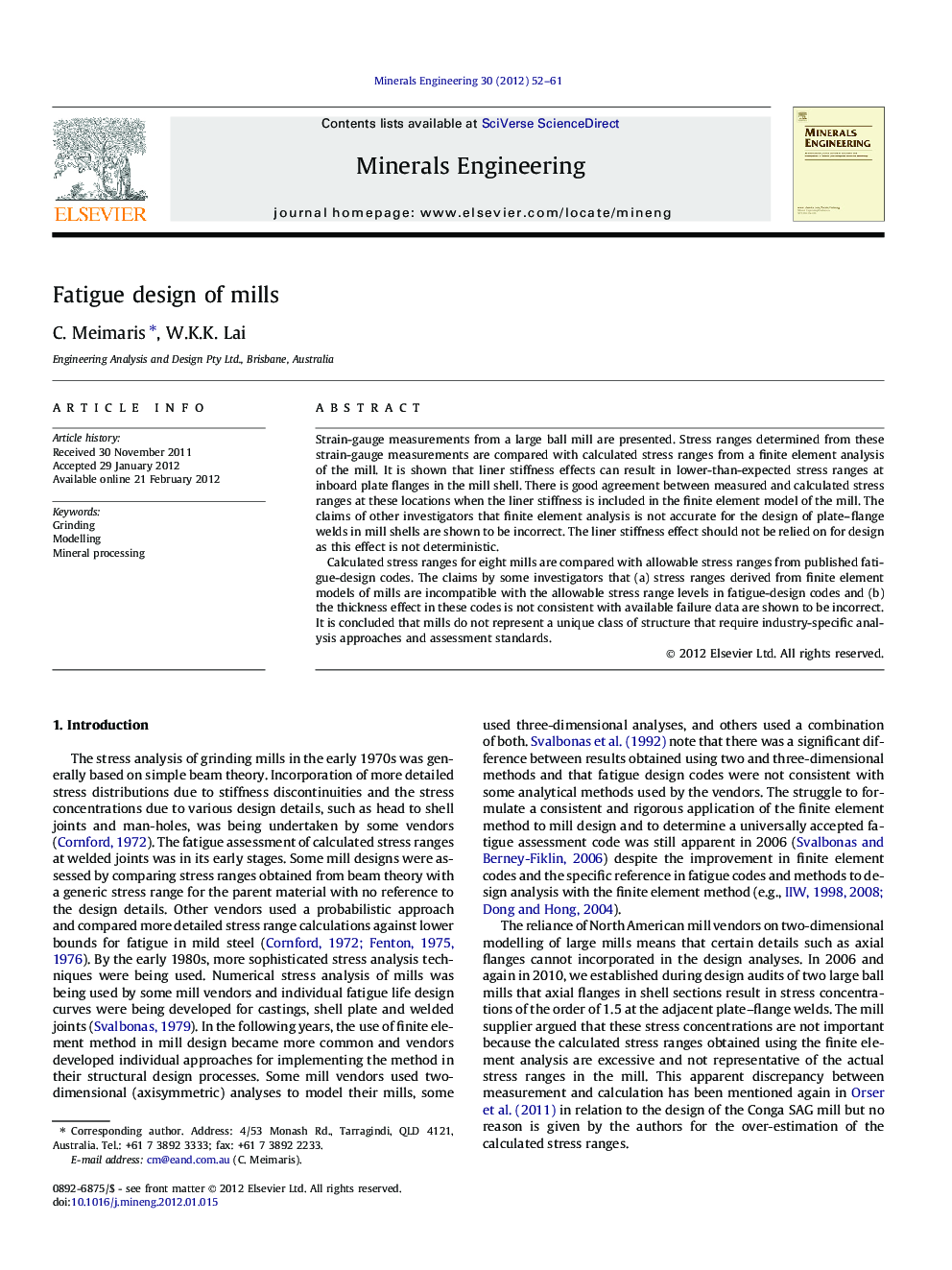| Article ID | Journal | Published Year | Pages | File Type |
|---|---|---|---|---|
| 233648 | Minerals Engineering | 2012 | 10 Pages |
Strain-gauge measurements from a large ball mill are presented. Stress ranges determined from these strain-gauge measurements are compared with calculated stress ranges from a finite element analysis of the mill. It is shown that liner stiffness effects can result in lower-than-expected stress ranges at inboard plate flanges in the mill shell. There is good agreement between measured and calculated stress ranges at these locations when the liner stiffness is included in the finite element model of the mill. The claims of other investigators that finite element analysis is not accurate for the design of plate–flange welds in mill shells are shown to be incorrect. The liner stiffness effect should not be relied on for design as this effect is not deterministic.Calculated stress ranges for eight mills are compared with allowable stress ranges from published fatigue-design codes. The claims by some investigators that (a) stress ranges derived from finite element models of mills are incompatible with the allowable stress range levels in fatigue-design codes and (b) the thickness effect in these codes is not consistent with available failure data are shown to be incorrect. It is concluded that mills do not represent a unique class of structure that require industry-specific analysis approaches and assessment standards.
► We compare strain gauge measurements and calculated stresses for a large ball mill. ► Measured stresses are lower than calculated stresses at the inboard plate flange. ► Liner stiffness is the cause of the lower-than-expected measured stresses. ► We show that mills can be assessed using FEA and modern fatigue design codes. ► We show that the plate thickness effect is evident in the fatigue of mills.
